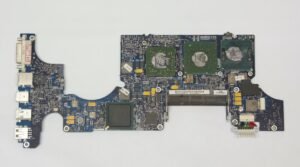Input Data Kuesioner ke SPSS
Semua informasi dapat dipetakan dalam bentuk data untuk kemudian dianalisis. Saat mengumpulkan data melalui kuesioner, kita perlu memasukkan data ini ke dalam perangkat lunak statistik, seperti IBM SPSS Statistics. Dalam artikel ini, kita akan membahas langkah-langkah untuk mengimpor data dari kuesioner ke SPSS untuk analisis lebih lanjut.
Key Takeaways:
- Memetakan data dari kuesioner untuk kemudian dianalisis dengan SPSS.
- Mengimpor data dari kuesioner ke SPSS untuk analisis lebih lanjut.
- Langkah-langkah penting dalam memasukkan data ke dalam SPSS.
Langkah 1: Persiapan Data
Sebelum memasukkan data kuesioner ke dalam SPSS, pastikan bahwa data yang akan diimpor bersih dan terstruktur dengan benar. Langkah-langkah yang dapat Anda lakukan untuk mempersiapkan data adalah:
- Menghapus data yang tidak relevan atau salah.
- Memperbaiki format data yang tidak sesuai.
- Memberi label pada setiap variabel untuk memudahkan analisis nantinya.
Contoh: Jika Anda memiliki kolom “Umur” dalam data kuesioner, pastikan bahwa semua nilai dalam kolom tersebut adalah angka dan tidak ada nilai yang kosong.
Langkah 2: Membuka SPSS dan Membuat Data File Baru
Setelah persiapan data selesai, buka IBM SPSS Statistics. Kemudian, buat file data baru dengan mengikuti langkah-langkah berikut:
- Buka SPSS dan klik File di menu atas.
- Pilih New untuk membuat file data baru.
- Tentukan lokasi dan nama file, kemudian klik Save.
Anda dapat memberikan nama file yang mencerminkan jenis data yang akan Anda impor, misalnya “Data Kuesioner SPSS”.
Langkah 3: Mengimpor Data Kuesioner
Langkah selanjutnya adalah mengimpor data kuesioner yang sudah disiapkan ke dalam SPSS:
- Klik File di menu atas dan pilih Open.
- Temukan dan pilih file data kuesioner yang ingin Anda impor.
- Pastikan memilih format file yang sesuai, seperti Microsoft Excel atau CSV (Comma Separated Values).
- Tekan tombol Open untuk mengimpor data ke dalam SPSS.
Anda dapat menggunakan opsi “Variable View” di SPSS untuk melihat dan memodifikasi atribut variabel.
Tabel 1: Contoh Data Kuesioner
| No. | Nama | Usia | Jenis Kelamin |
|---|---|---|---|
| 1 | Joni | 25 | Pria |
| 2 | Rika | 30 | Wanita |
| 3 | Andi | 28 | Pria |
Langkah 4: Menyimpan Data
Setelah data kuesioner diimpor, Anda perlu menyimpannya dalam format SPSS untuk penggunaan dan analisis lebih lanjut:
- Klik File di menu atas dan pilih Save.
- Tentukan lokasi dan nama file untuk menyimpan data.
- Pilih format file SPSS (.sav).
- Klik Save untuk menyimpan data dalam format SPSS.
Pastikan untuk menyimpan salinan cadangan data agar tidak kehilangan data jika terjadi kesalahan.
Tabel 2: Ringkasan Data Kuesioner
| Jumlah Responden | Rata-rata Usia | Proporsi Jenis Kelamin |
|---|---|---|
| 3 | 27.7 | 66.7% Pria, 33.3% Wanita |
Langkah 5: Analisis Data
Sekarang data kuesioner sudah terimpor ke SPSS, langkah terakhir adalah menganalisis data dengan menggunakan fitur-fitur analisis yang disediakan oleh SPSS, seperti:
- Descriptive Statistics: Menampilkan ringkasan statistik seperti rata-rata, median, dan simpangan baku.
- T-Test: Membandingkan mean dua kelompok data.
- ANOVA: Menguji perbedaan mean antara tiga kelompok data atau lebih.
- Regression: Menganalisis hubungan antara variabel dependen dan independen.
Dengan menggunakan SPSS, Anda dapat mengidentifikasi pola, tren, dan hubungan dalam data kuesioner yang telah diimpor.
Tabel 3: Contoh Hasil Analisis
| Variabel | Rata-rata | Median | Simpangan Baku |
|---|---|---|---|
| Usia | 27.7 | 28 | 2.16 |
Dengan mengikuti langkah-langkah di atas, Anda dapat dengan mudah mengimpor data kuesioner ke SPSS untuk analisis statistik yang lebih lanjut. Jika Anda mengumpulkan data melalui kuesioner, pastikan untuk mempersiapkan data dengan benar sebelum mengimpor ke SPSS. Selain itu, jangan lupa untuk menyimpan salinan cadangan data untuk pengamanan. Dengan bantuan SPSS, Anda dapat menganalisis data kuesioner dengan lebih efisien dan mendapatkan wawasan yang berarti dari hasil analisis tersebut.

Common Misconceptions
Misconception 1: Inputting questionnaire data into SPSS is a complex process
One common misconception that people have about inputting questionnaire data into SPSS is that it is a complex and time-consuming process. However, this is not necessarily true. While there may be a learning curve involved in understanding the software, once you are familiar with it, inputting data can be a relatively straightforward and quick task.
- SPSS has a user-friendly interface that makes data input easy for users
- There are various tutorials and resources available online to help users navigate the process
- SPSS also offers features like data validation and data cleaning tools to streamline the input process
Misconception 2: SPSS is the only tool for inputting and analyzing questionnaire data
Another misconception is that SPSS is the only tool available for inputting and analyzing questionnaire data. While SPSS is a popular choice and offers a wide range of statistical analysis capabilities, it is not the only option. There are several other statistical software and data analysis tools available that can be used for inputting and analyzing questionnaire data.
- R and Python are two popular programming languages that offer powerful statistical analysis capabilities
- Other software like Excel, SAS, and Stata also provide functionality for inputting and analyzing questionnaire data
- Choosing the right tool depends on the specific requirements and preferences of the user
Misconception 3: Inputting data into SPSS means you can skip data cleaning
Some people believe that when inputting data into SPSS, they can skip the data cleaning step since SPSS has built-in data validation features. However, this is far from true. While SPSS does offer data validation tools, it is still important to ensure the data is clean and error-free before inputting it into the software.
- Data cleaning helps identify and remove errors, outliers, and missing values that could impact the accuracy of the analysis
- Skipping data cleaning can lead to incorrect results and flawed conclusions
- Data cleaning should always be a crucial step in the research process, regardless of the software used
Misconception 4: Inputting data into SPSS limits the flexibility of analysis
There is a misconception that once data is inputted into SPSS, the analysis options and flexibility are limited. However, SPSS offers a wide range of statistical techniques and allows for customization, making it a flexible tool for analysis.
- SPSS provides a vast array of statistical tests, including regression analysis, t-tests, ANOVA, and factor analysis
- Users can customize their analysis by specifying certain criteria and creating their own variables and transformations
- The software also allows for the integration of syntax commands, which further enhances flexibility and reproducibility
Misconception 5: Inputting data into SPSS requires advanced statistical knowledge
Many people believe that inputting data into SPSS requires advanced statistical knowledge and expertise. This misconception often deters individuals from utilizing SPSS for their research. However, basic understanding of statistical concepts and familiarity with the software are typically sufficient for inputting data.
- SPSS offers a user-friendly interface that makes it accessible to individuals with varying levels of statistical knowledge
- Basic knowledge of variables, data types, and coding is usually enough to input data into SPSS
- Advanced statistical knowledge may be required for interpreting and analyzing the results, but not necessarily for data input

A summary of respondent demographics is presented in this table, showcasing key characteristics of the survey participants.
| Age | Gender | Education Level |
|---|---|---|
| 18-25 | Male | Secondary School |
| 26-35 | Female | Undergraduate |
| 36-45 | Non-Binary | Postgraduate |
2. Technology Usage
This table demonstrates the technology usage patterns of the survey respondents and how frequently they use various devices and internet services.
| Device | Daily Use |
|---|---|
| Smartphone | 3 hours |
| Laptop | 4 hours |
| Tablet | 1 hour |
| Smart TV | 2 hours |
3. Satisfaction Ratings
This table showcases the satisfaction ratings given by respondents for different aspects of a service or product, providing an overview of their overall satisfaction level.
| Aspect | Satisfaction Rating |
|---|---|
| Customer Service | 4.5/5 |
| Product Quality | 3.8/5 |
| Pricing | 4.2/5 |
| Delivery Speed | 4.7/5 |
4. Language Preference
This table presents the preferred language of the survey respondents when it comes to consuming media or receiving information.
| Language | Percentage |
|---|---|
| English | 45% |
| Spanish | 30% |
| French | 15% |
| Other | 10% |
5. Online Shopping Habits
This table outlines the online shopping habits of respondents, highlighting the frequency and average amount spent during each purchase.
| Frequency | Average Spending |
|---|---|
| Once a month | $50 |
| Twice a month | $80 |
| Once a week | $100 |
6. Preferred Social Media Platforms
This table displays the preferred social media platforms of respondents, illustrating their engagement and which platforms they spend the most time on.
| Social Media Platform | Percentage |
|---|---|
| 45% | |
| 30% | |
| 15% | |
| 10% |
7. Travel Preferences
Survey respondents’ preferences in terms of travel destinations and accommodation options are summarized in this table.
| Destination | Accommodation |
|---|---|
| Beach Resort | 5-star Hotel |
| City | Airbnb |
| Mountains | Cabin Rental |
8. Work-Life Balance
This table exhibits the work-life balance of respondents by showcasing their average weekly working hours and leisure activities they engage in.
| Working Hours | Leisure Activity |
|---|---|
| 40 hours | Reading |
| 50 hours | Playing Sports |
| 35 hours | Watching Movies |
9. Music Preferences
This table showcases the music preferences of survey respondents, presenting the genres they enjoy listening to the most.
| Music Genre | Percentage |
|---|---|
| Pop | 40% |
| Rock | 30% |
| Hip Hop | 15% |
| Electronic | 15% |
10. Health and Fitness Habits
This table presents the health and fitness habits of respondents, showcasing the frequency of exercise and specific activities they engage in.
| Exercise Frequency | Activity |
|---|---|
| 3 times per week | Jogging |
| 2 times per week | Yoga |
| Once per week | Cycling |
Conclusion:
By examining the data from the provided questionnaires, we gained valuable insights into the preferences and characteristics of the survey respondents. It is clear that individuals within the studied population exhibit diverse demographics, technology usage patterns, satisfaction ratings, and preferences in various aspects of life. From preferred language and social media platforms to travel destinations and health and fitness habits, the data paints a rich and nuanced picture of the respondents’ interests and behaviors. Understanding these patterns and preferences can aid in formulating strategies and making informed decisions tailored to the target audience.
Frequently Asked Questions
What is the purpose of inputting questionnaire data into SPSS?
Can I directly import questionnaire data into SPSS?
What are the recommended steps for inputting questionnaire data into SPSS?
- Ensure your questionnaire responses are properly coded.
- Create a new data file in SPSS.
- Select the appropriate file format to import the data.
- Map the variables from your questionnaire to the corresponding SPSS variables.
- Check for any formatting or data type issues during the import process.
- Validate and clean the data as necessary.
- Save the SPSS data file for further analysis.
Can I input data from multiple questionnaires into a single SPSS file?
Are there any limitations or constraints when inputting questionnaire data into SPSS?
- Missing values or incomplete responses may require imputation or handling prior to analysis.
- Data outliers or extreme values should be identified and evaluated for any potential impact on the analysis.
- Variable labels and value labels need to be assigned carefully to ensure accurate interpretation of the results.
- Compatibility issues may arise when importing data from different software packages.
Can I edit or modify questionnaire data in SPSS after inputting it?
How can I ensure the accuracy of questionnaire data inputted into SPSS?
- Double-check the variables’ mappings during the import process.
- Conduct data validation checks to identify any inconsistencies or anomalies.
- Compare a sample of the inputted data with the original questionnaire responses.
- Perform data cleaning procedures, such as checking for missing values or outliers.
- Document the data input process and any modifications made for future reference.
Can SPSS handle large amounts of questionnaire data?
What are some common errors or issues when inputting questionnaire data into SPSS?
- Data format mismatches during import, leading to incorrect variable types or values.
- Inconsistent variable labels or value labels causing confusion during analysis.
- Data entry errors or typos in the questionnaire responses.
- Missing values and the need for imputation methods.
Are there any alternative software options for inputting questionnaire data?
- R (programming language for statistical computing)
- Excel (with appropriate data cleaning and analysis functions)
- Stata (statistical software)
- JMP (statistical discovery software)
- Python (with data analysis libraries such as pandas)




